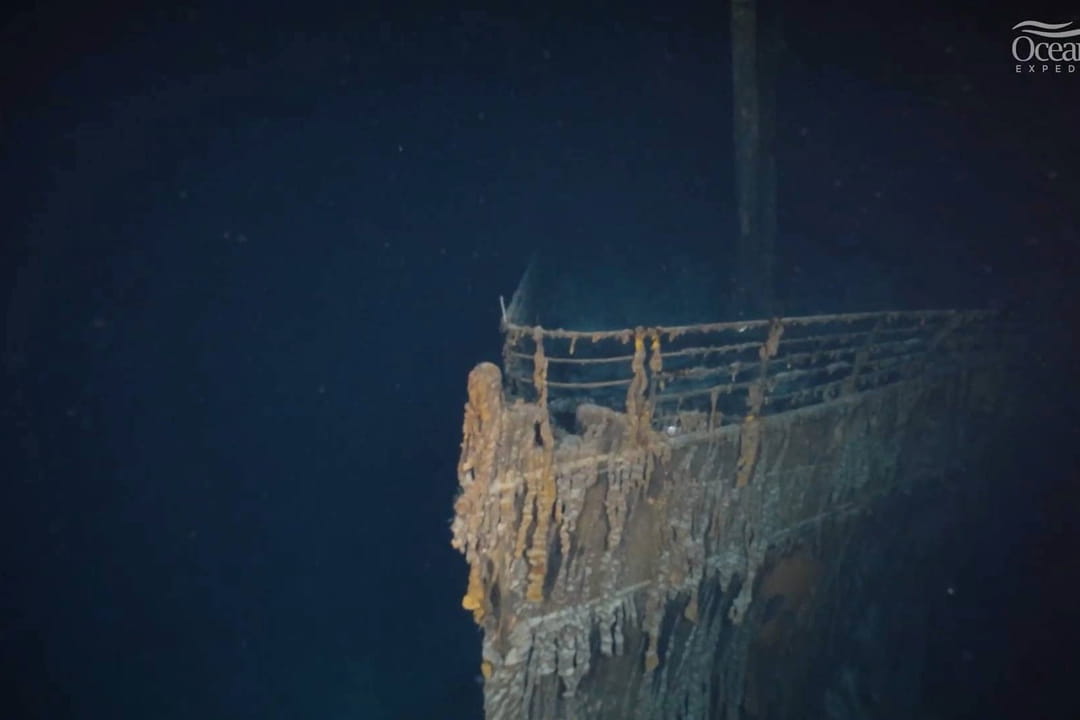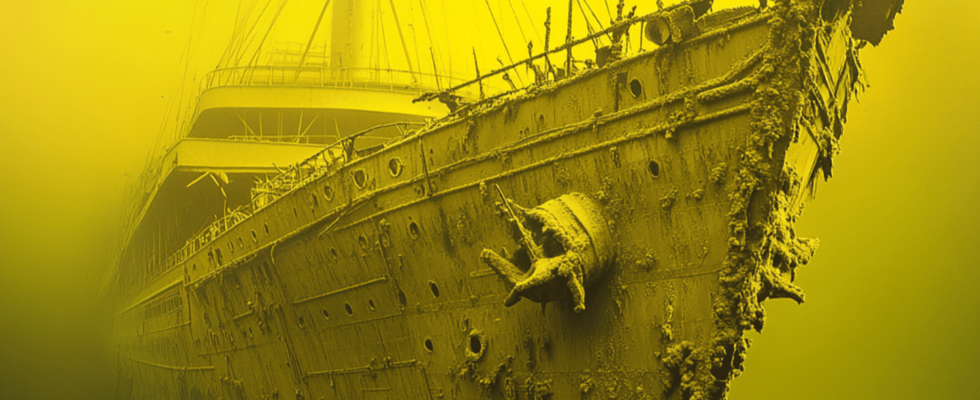A new expedition has made it possible to find out more about what will ultimately happen to the wreck of the Titanic.
In 1912, the 269-meter-long Titanic broke apart when it hit an iceberg and sank. The wreck, which was discovered in 1985, lies at a depth of 3,821 meters in the North Atlantic. The ship split into two parts: the bow and the stern, which ended up nearly 600 meters apart at the bottom of the water. The ship disintegrates little by little: its decomposition progresses towards the front, the part which had remained most intact.
The wreck is particularly attacked by micro-organisms. It is covered in bacteria, marine fungi and other microbes. These bacteria have attacked the steel structure and are eating the iron of the liner. The Titanic loses between 130 kg and 200 kg of iron every day. This deterioration is also due to underwater pressure and currents. These can carry away materials from the liner or cause fragile parts to collapse. These currents could also cause the wreck to be buried under sediment, even before its total disintegration.
Images from a recent expedition of RMS Titanic INC allowed us to learn more about the current state of the wreck. The characteristic railing on the Titanic’s bow, which was beginning to deform, is now believed to have partly collapsed. Some areas of the bridge also collapsed inwards. Large cracks and cracks also appeared on the steel hull, notably caused by the boat’s weight of 52,000 tonnes. The supporting elements also become thinner and thinner due to corrosion.

The emblematic silhouette of the boat is therefore in the process of disappearing, as confided by Gerhard Seiffert, a deep-sea marine archaeologist who led an expedition in 2022. “The fall of the railing segment, which was still in place in 2022 when I “I was on the wreck with Magellan, or the collapse of the ceiling of the captain’s bathroom years before can serve as examples”, he illustrated to the BBC.
“I estimate that the most emblematic parts of the wreck, such as its superstructure (the Grand Staircase hall, the Marconi Room, the Officers’ Quarters) will disappear around 2100,” assured Anthony El-Khouri. , microbiologist at Eastern Florida State College, BBC. However, according to him, the wreck will take several centuries to completely disappear.
What will then be the final fate of the boat? According to the expert, it will leave a stain of iron oxide on the seabed, dotted with certain objects such as “the vibrant tiles of the Turkish baths, which are composed of fired silica”, which “will last almost forever”.
